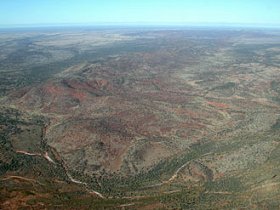
September Editorial
The Earth's oldest diamonds

September Editorial
The Earth's oldest diamonds
|
|
Diamonds are the most coveted minerals on Earth and for good reason. They are the hardest of minerals, and they exhibit perfect structure and brilliance. The process for crystallizing diamonds is unique, requiring a combination of very high pressure and temperature. And 'high temperature' here means approximately 3,630 degrees Fahrenheit (which is the equivalent of about 2000 degrees Centigrade). The only place where these conditions are met is in the mantle zone some 100 miles deep beneath the Earth's surface. Through volcanic eruptions new diamonds are slowly moving upwards, most commonly being found in Kimberlites. Although it has been known that diamonds were crystallized millions of years ago, recent studies published in Nature indicate that some diamonds may be much older than we think. Research led by Martina Menneken from Westfali William University in Germany showed the presence of tiny diamonds within zircons (namely zirconium silicate (ZrSiO4) formed 4.25 billion years ago. Zircons are a very useful dating tool. They form at temperatures between 1,112 degrees and 1,652 degrees Fahrenheit and, once crystallized, a zircon's chemical makeup and structure don't change, making it easy to determine its age through a process similar to carbon dating. Detrital zircons ('detrial' refers to loose grains of minerals or rocks that have been eroded from other rocks or earth materials ) older than 4,000 million years from the Jack Hills, Western Australia are the oldest identified fragments of the Earth's crust. They are unique in preserving information about the earliest evolution of the Earth. Inclusions of quartz, K-feldspar and monazite in the zircons, in combination with an enrichment of light rare-earth elements and an estimated low zircon crystallization temperature, have previously been used as evidence for early recycling of continental crust, leading to the production of granitic melts in the Hadean era. But findingf diamonds in the zircon suggests that the molten lava that covered primordial Earth cooled faster than had previously been thought. Assuming that the conditions on the early Earth were not unique, the study also implies that the lithosphere was relatively thick and interaction between the crust and mantle was taking place 4.2 billion years ago. Martina Menneken's work will still have to be fully verified. Thereafter it will add substantially to our understanding of early geological processes on Earth, as well as proving that if diamonds are not forever, 4,250,000,000 years is probably close enough. |
| _______________________________ | ||||
| Home | | | Shopping | | | Database |
© Biscuit Software 2004-2015
All rights reserved